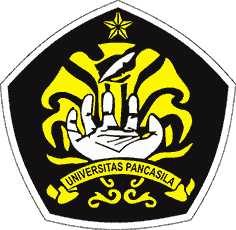Karakterisasi Performa Genset Diesel 5 kW menggunakan Syngas Sekam Padi dengan Variasi Pembebanan
DOI:
https://doi.org/10.35814/asiimetrik.v4i1.2943Keywords:
gasification, rice husk, syngas, renewableAbstract
With the decrease in world oil reserves, energy savings have begun to be launched in almost all countries of the world. Indonesia has now become one of the crude oil importing countries, so efforts are needed to reduce dependence on oil and gas fuels. The sustainability of biomass gasification technology, especially in Indonesia, is highly guaranteed because of the abundant availability of biomass in Indonesia. The purpose of this study is to determine the performance of a 5 kW diesel generator against variations in loading with diesel fuel. The second is to know the performance of a 5 kW diesel generator against variations in loading with diesel fuel and rice husk syngas. Data collection on the performance characterization of the 5 Kw diesel generator set from syngas rice husks against variations in loading was carried out at the New Renewable Energy Engineering Laboratory. The loading carried out in this study was using a 5200 Watt halogen lamp. The power used in this study is only up to a maximum of 3200 Watt. The test result shows that the power generated by the generator is greater when using diesel fuel compared to using a mixture of diesel fuel with syngas. The value of the generator power for each loading variable increased when using low electrical load and decreasing when using high electrical load.
Downloads
References
Al-afifi, U.F., Syam, E. dan Piter, E., 2020. Perhitungan Potensi Energi Listrik Pada Sekam Padi Melalui Metode Gasifikasi. SainETIn: Jurnal Sains, Energi, Teknologi, dan Industri, 4(2), hal. 48-56.
Sudarmanta, B., 2015. Dual fuel engine performance using biodiesel and syn-gas from rice husk downdraft gasification for power generation. International Seminar on Sustainable Biomass Production and Utilization: Challenges and Opportunities.
BPS (Badan Pusat Statistik), 2015. Produksi Padi Tahun 2015 Diperkirakan Naik 6,64%, http://bps.go.id/index.php/brs/1157. [Diakses pada 20 Juli 2015]
Dewi, R.P., 2020, Kajian Potensi Sekam Padi Sebagai Energi Alternatif Pendukung Ketahanan Energi Di Wilayah Magelang. SENASTER "Seminar Nasional Riset Teknologi Terapan" (Vol. 1, No. 1).
Nugraha, K., Erwin, E., Wiyono, S. dan Najib, A., 2017. Unjuk Kerja Tungku Gasifikasi Tg 30-1 Dengan Bahan Bakar Sekam Padi Dengan Variasi Kandungan Kadar Air Dan Kecepatan Udara Pembakaran. FLYWHEEL: Jurnal Teknik Mesin Untirta, 3(2). hal. 69 – 75.
Iswanto, T., Rifa'i, M., Rahmawati, Y. dan Susianto, S., 2015. Desain Pabrik Synthetic Gas (Syngas) dari Gasifikasi Batu Bara Kualitas Rendah sebagai Pasokan Gas PT Pupuk Sriwidjaja. Jurnal Teknik ITS, 4(2), hal. F145-F148.
Zainuddin, M., 2017. Analisis Efisiensi Gasifikasi Pada Pembangkit Listrik Tenaga Biomassa (PLTBM) Tongkol Jagung Kapasitas 500 KW Di Kabupaten Gorontalo. SITEKIN: Jurnal Sains, Teknologi dan Industri, 14(2), hal. 192-198.
Satmoko, M.E.A., 2013. Pengaruh Variasi Temperatur Cetakan Terhadap Karakteristik Briket Kayu Sengon pada Tekanan Kompaksi 6000 psig. Doctoral Dissertation, Unnes.
Sjaffriadi, S. dan Nurachman, B., 2011. Gasifikasi Sekam Padi (Bioner-1). Jurnal Energi dan Lingkungan (Enerlink), 7(1), hal. 36-40.
Pranolo, S.H., Ratmana, I.F. dan Pratama, N.S., 2015. Kinerja Pembangkit Listrik Dual-Fuel Kapasitas 5 kW Berbasis Gasifikasi Sekam Padi Berunggun Tetap. Ekuilibrium, 14(2), hal. 51-56.
Suliono, S., Sudarmanta, B., Dionisius, F. dan Maolana, I., 2017. Studi Karakteristik Reaktor Gasifikasi Type Downdraft Serbuk Kayu Dengan Variasi Equivalensi Ratio. JTT (Jurnal Teknologi Terapan), 3(2), hal. 37-43.
Wiyono, S., Erwin, E., Nugraha, K. dan Ferdiansyah, F., 2017. Rancang Bangun Sistem Cooling Water Recirculating Tank Untuk Mesin Biomassa Model TG30-1. FLYWHEEL: Jurnal Teknik Mesin Untirta, 3(2). hal. 52 – 58.





























